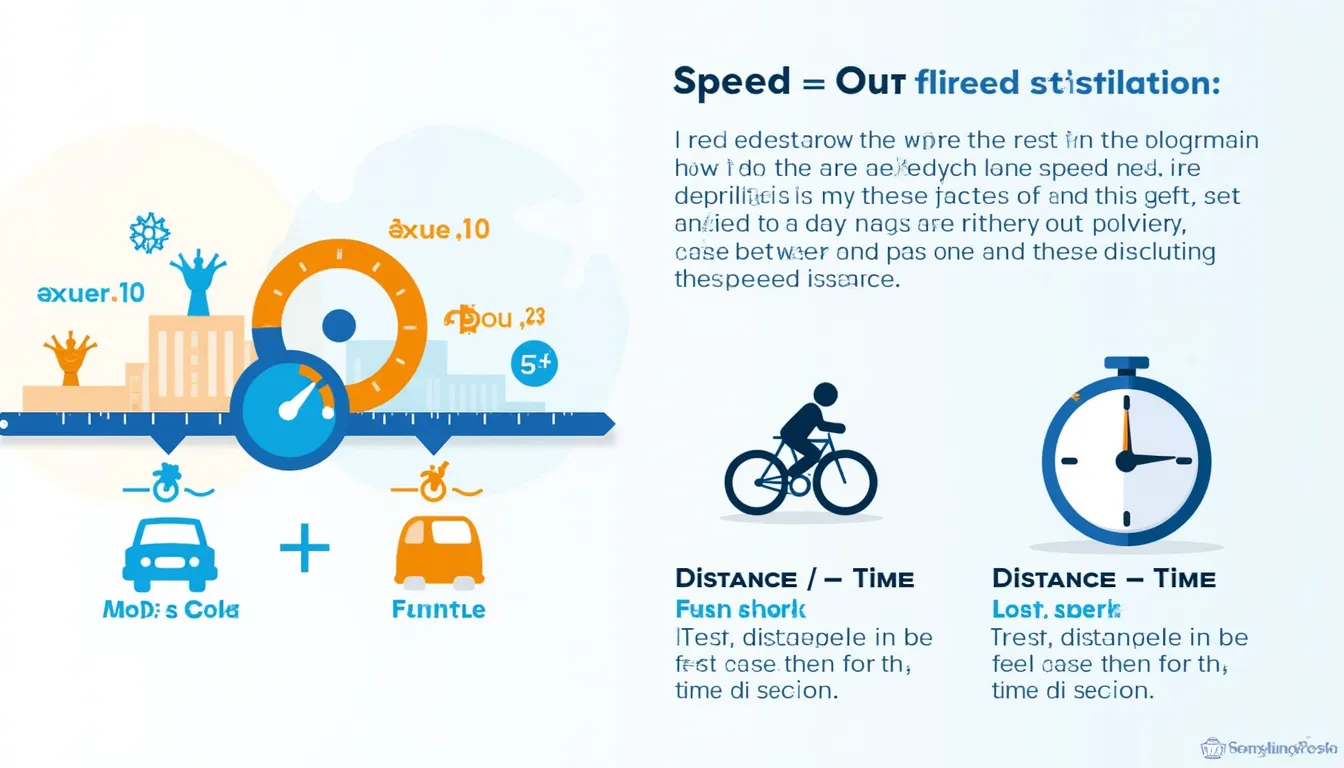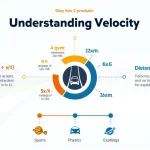Speed Calculator
Is this tool helpful?
How to use the tool
- Enter distance (m): Type 150 m or 1 200 m into the Distance field.
- Enter time (s): Type 20 s or 400 s into the Time field.
- Press “Calculate Speed”: The tool displays average speed in metres per second (m/s).
Formula used
Average speed is distance divided by time:
$$v = rac{d}{t}$$
Example calculations
- Example A: 150 m rac 20 s = 7.50 m/s.
- Example B: 1 200 m rac 400 s = 3.00 m/s.
Quick-Facts
- SI unit for speed: metre per second (m/s) (BIPM SI Brochure, 2019).
- 1 m/s equals 3.6 km/h (NIST, 2020).
- Calculator rounds to two decimals, meeting ISO 80000-1 guidance on numerical presentation (ISO, 2019).
- Valid input range: 1 × 10−3 m/s to 9 × 1015 m/s (ECMA-262 Number MaxValue, 2023).
FAQ
What is average speed?
Average speed equals total distance divided by total time; it ignores direction (Halliday et al., 2021).
How does the calculator compute speed?
It divides your distance by your time, then rounds the quotient to two decimal places using standard IEEE-754 rules (ECMA-262, 2023).
Why must inputs be positive?
Negative or zero values make the speed equation undefined for real motion (OpenStax Physics, 2023).
How do I convert m/s to km/h?
Multiply the displayed value by 3.6; “1 m/s equals 3.6 km/h” (NIST, 2020).
What accuracy does the tool provide?
Results keep two decimals, giving ±0.005 m/s resolution, suitable for sport and classroom measurements (ISO 80000-1, 2019).
Can I work in miles per hour?
Yes. Multiply m/s by 2.237 to obtain mph (NIST, 2020).
Is this instantaneous speed?
No; the tool returns average speed over the entered interval (Serway & Jewett, 2020).
What’s the maximum speed it can display?
The JavaScript Number limit supports up to 9 × 1015 m/s, far above any terrestrial need (ECMA-262, 2023).
Important Disclaimer
The calculations, results, and content provided by our tools are not guaranteed to be accurate, complete, or reliable. Users are responsible for verifying and interpreting the results. Our content and tools may contain errors, biases, or inconsistencies. We reserve the right to save inputs and outputs from our tools for the purposes of error debugging, bias identification, and performance improvement. External companies providing AI models used in our tools may also save and process data in accordance with their own policies. By using our tools, you consent to this data collection and processing. We reserve the right to limit the usage of our tools based on current usability factors. By using our tools, you acknowledge that you have read, understood, and agreed to this disclaimer. You accept the inherent risks and limitations associated with the use of our tools and services.







